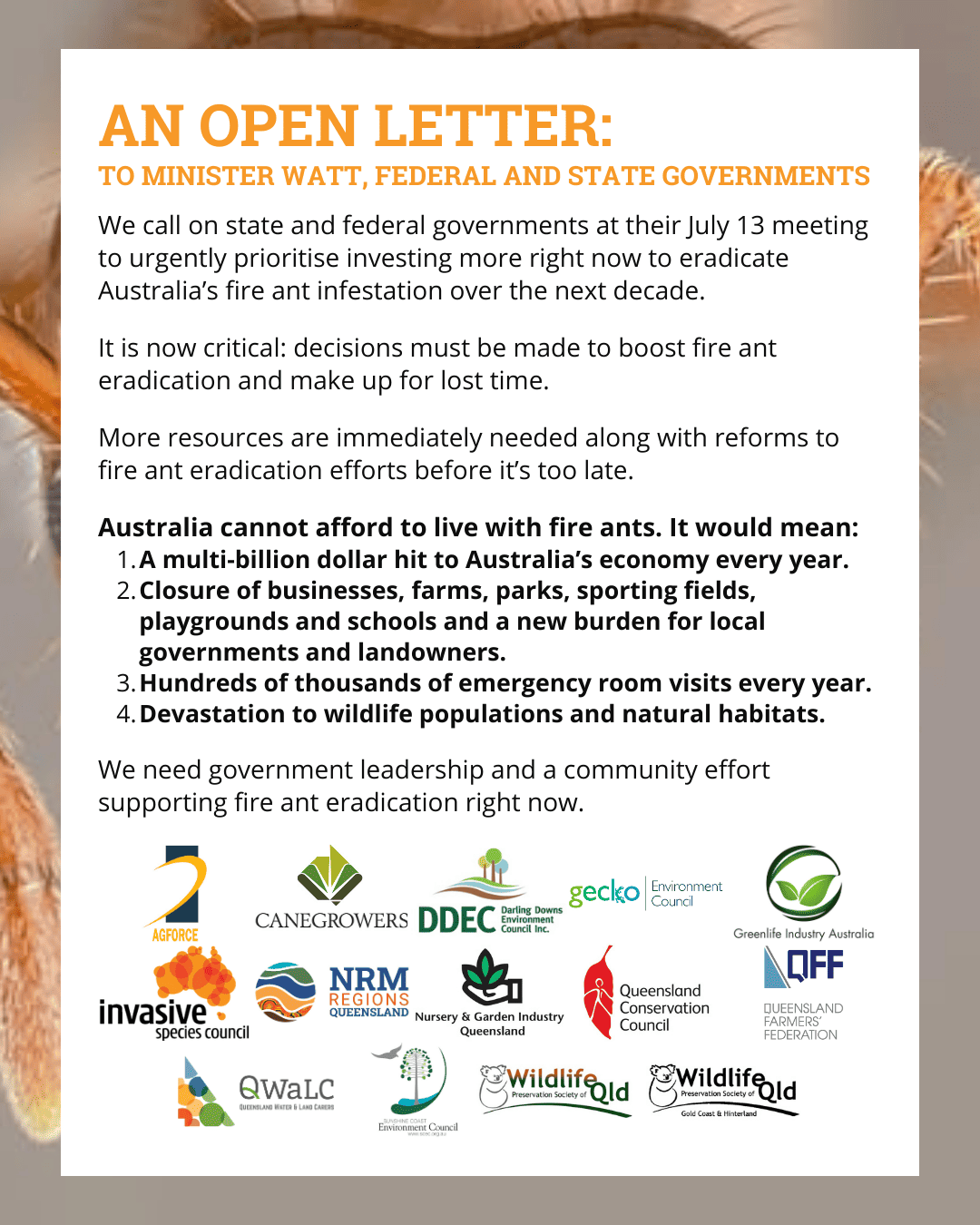Fire ants are on the march in Australia, and their ability to be transported in freight means they could pop up anywhere, at any time. So long as they are somewhere on the mainland, every part of Australia is at risk from fire ants.
A fire ant future would cost Australian’s billions of dollars every year. This feral invasion would, close parks, beaches and sporting fields, impact on yields and survival of crops and farm animals, impact on the health and distribution of native wildlife, and result in thousands of medical appointments from their stings.
NRM Regions Queensland has joined the voices of Queensland’s peak conservation, agriculture and nursery industry groups to call for state and federal governments to urgently invest so we can eradicate Australia’s fire ant infestation over the next decade.

A recent strategic review of the fire ant’s eradication program said that if Red Imported Fire Ants were allowed to spread unchecked, then annual impacts would amount to nearly $2 billion. Apart from the obvious health implications, this includes impacts to the cattle and wheat industries as well as 50 other commercial food crops. The pest would also impact schools, telecommunications and electrical supply and equipment, sports such as golf and the tourism sector, which is worth more than $100 billion to Australia’s economy.
Chris Norman, CEO of NRM Regions Queensland said fire ants also pose a threat to our unique ecosystems and our native wildlife.
“Fire ants have the potential to inhabit most areas of Australia,” Chris said.
“Loss of biodiversity is listed as a key threatening process under the Commonwealth EPBC Act, yet fire ants can affect our environment by displacing or eliminating native species, eating and damaging seeds, predating and disturbing insects and other animals that pollinate native plants and attacking bird species that have ground-based feeding habits.”
“Natural Resource Management is focussed on the protection of our natural assets and to ensure we maintain the quality of life we love so much, we must effectively control our invasive species – which are driving more than 80% of our most vulnerable plants and animals towards extinction,” he said.
Signatories to an open letter to Queensland and Australian Governments are also encouraging people to sign a petition calling on decision makers to boost funding so that fire ants can be eradicated from Australia over the next decade.
Read more about the biosecurity work of Queensland’s regional NRM organisations here.
_ _
Feature photo via AntWeb, courtesy Invasive Species Council.
